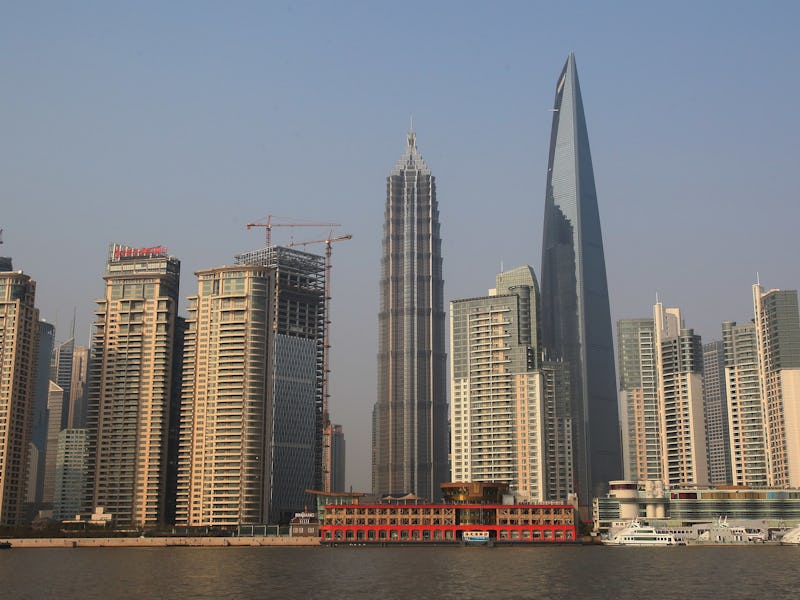How We're Getting Ready for 70 Percent of the World to Live in Megacities
In Shanghai, new buildings are greener. In New York, old ones are getting facelifts.

On Thursday, in case you missed it, it was “Buildings Day” at the COP21 climate change conference in Paris.
It might sound bland, but it’s important. Thirty percent of global fossil fuel emissions come from the building industry. Thirty percent!
In order to make sure that we lower that number, 16 countries and 60 organizations joined to launch the Global Alliance for Buildings and Construction, a worldwide network that plans to make eco-friendly buildings the standard in the future.
Here’s a crazy notion: By 2050, 70 percent of the world’s population will live in cities. That’s a total switch in the span of a century — in 1950 the humans were just 30 percent urban.
There also could be almost 10 billion people on the planet by the middle of the century. These cities and these people are going to need a lot of buildings.
And if we’re going to avoid major climate change related disasters, those buildings had better be efficient. If we stick to the status quo, emissions from the building sector would double by 2050.
The Shanghai Tower in China.
Fortunately, green building technology is already a thing. Take the Shanghai Tower in China, for example. The soon-to-be-opened skyscraper is one of the tallest buildings in the world, and is also promised to be one of the greenest. It captures rainwater to flush the toilets, and has wind turbines on the roof. It even has a double skin — between the core of a building and outside there are atria enclosed in glass that form outdoor-like spaces that serve to insulate the building and reduce energy costs. All in, the eco-friendly features are expected to save the equivalent of 34,000 tons of carbon emissions every year.
Making the greener buildings of the future isn’t just about putting up new ones, it’s also about improving on what we’ve already got. The Empire State Building, for example, recently underwent efficiency renovations that included replacing all 6,500 windows. It was a huge project, but it also resulted in huge savings. In the three years following the retrofit, the building saved $7.5 million in energy costs.
The wonderful thing about greening the building industry is that it’s a very cost-effective way of reducing emissions — the efficient tech typically pays for itself many times over, over the lifespan of the building. So the trick is getting the right programs in place so that the lifetime costs trump the upfront costs.
This needs to become standard, all around the world. That’s where the Global Alliance for Buildings and Construction comes in. It’s going to bring together governments and industry associations to share information and craft the policies and incentives that will build the emissions-free (maybe even emissions-negative) buildings of the future.